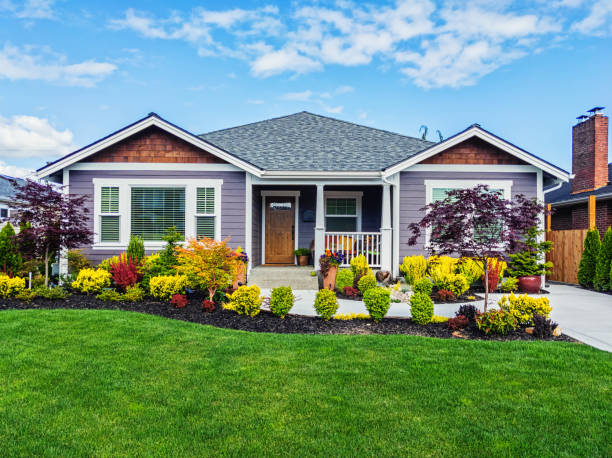2. **Smart Homes: Integrating Technology to Enhance Comfort and Efficiency
August 4, 2024

In the rapidly evolving world of home technology, the concept of the smart home has transitioned from a futuristic dream to a practical reality. By integrating advanced technology into your home, you can significantly enhance both comfort and efficiency. Smart home technology offers a wide range of solutions designed to improve daily living, save time, and reduce energy consumption. Here’s a comprehensive guide to understanding how smart home integration can transform your living space.
#### **1. The Basics of Smart Home Technology**
**1.1. What is a Smart Home?**
– **Definition**: A smart home utilizes internet-connected devices and systems to automate and control various functions within the home. These devices communicate with each other and can be managed remotely through apps, voice commands, or automated schedules.
– **Components**: Typical smart home components include smart lighting, thermostats, security systems, appliances, and entertainment systems.
**1.2. Benefits of Smart Home Integration**
– **Convenience**: Smart home technology simplifies everyday tasks by allowing you to control systems with a single app or voice command, making home management more efficient.
– **Energy Efficiency**: Smart devices help monitor and manage energy use, reducing consumption and lowering utility bills.
– **Enhanced Security**: Integrated security systems provide real-time monitoring, alerts, and remote access, enhancing home security and peace of mind.
#### **2. Smart Lighting and Climate Control**
**2.1. Smart Lighting**
– **Automated Lighting**: Smart lighting systems can be programmed to turn on or off at specific times or based on occupancy, improving convenience and security. For example, lights can be set to turn on automatically when you enter a room.
– **Adjustable Ambiance**: Many smart lighting systems allow you to adjust brightness and color temperature to create the desired mood or ambiance. You can also use voice commands or apps to control lighting settings.
**2.2. Smart Thermostats**
– **Temperature Control**: Smart thermostats learn your preferences and adjust the temperature automatically to maintain comfort while optimizing energy use. They can also be controlled remotely through your smartphone.
– **Energy Savings**: By analyzing your usage patterns, smart thermostats can suggest adjustments and help you save on heating and cooling costs. Features like scheduling and geofencing enable more precise control of your home’s climate.
#### **3. Smart Security Systems**
**3.1. Smart Locks and Doorbells**
– **Keyless Entry**: Smart locks provide keyless entry options, such as PIN codes or biometric scans, and allow remote access control through your smartphone. This adds convenience and enhances security.
– **Video Doorbells**: Smart doorbells with built-in cameras allow you to see and communicate with visitors at your door from anywhere. They also provide video recordings and alerts for added security.
**3.2. Surveillance and Monitoring**
– **Security Cameras**: Integrated smart cameras offer live video feeds and motion detection alerts. Many systems provide cloud storage for recorded footage and can be accessed remotely.
– **Sensors and Alarms**: Smart sensors for windows and doors, combined with alarm systems, help detect unauthorized entry and alert you to potential security breaches.
#### **4. Smart Appliances and Entertainment**
**4.1. Smart Appliances**
– **Connected Kitchen**: Smart refrigerators, ovens, and dishwashers offer features such as remote control, inventory tracking, and recipe suggestions. For example, you can preheat your oven or check your fridge’s contents from your smartphone.
– **Energy Efficiency**: Many smart appliances are designed to optimize energy use, providing real-time usage data and maintenance alerts to enhance efficiency and reduce costs.
**4.2. Smart Entertainment Systems**
– **Multi-Room Audio**: Smart speakers and audio systems allow you to play music throughout your home with voice commands or app control. Multi-room setups ensure seamless listening experiences in every room.
– **Home Theater Integration**: Smart TVs and media centers offer advanced features such as streaming services, voice control, and automated settings to enhance your entertainment experience.
#### **5. Managing and Controlling Your Smart Home**
**5.1. Centralized Control**
– **Smart Hubs**: A smart hub acts as the central controller for all your smart devices, allowing them to communicate with each other and providing a unified interface for management. Popular hubs include Amazon Echo, Google Nest Hub, and Samsung SmartThings.
– **Mobile Apps**: Most smart home devices come with dedicated apps that allow you to control and monitor your systems from anywhere. These apps provide features such as scheduling, remote access, and notifications.
**5.2. Voice Assistants**
– **Voice Control**: Integration with voice assistants like Amazon Alexa, Google Assistant, or Apple Siri allows you to control your smart devices with voice commands. This hands-free option enhances convenience and accessibility.
– **Routine Automation**: Voice assistants can be programmed to perform routine tasks, such as turning off lights or adjusting the thermostat, based on specific triggers or schedules.
#### **6. Getting Started with Smart Home Technology**
**6.1. Assess Your Needs**
– **Identify Priorities**: Determine which areas of your home would benefit most from smart technology. Consider aspects like security, energy efficiency, and convenience.
– **Start Small**: Begin with a few key devices and gradually expand as you become more familiar with the technology.
**6.2. Installation and Integration**
– **Professional Installation**: For more complex systems, consider hiring a professional to ensure proper installation and integration of your smart devices.
– **DIY Options**: Many smart devices are designed for easy installation by homeowners. Follow manufacturer instructions and utilize online resources for guidance.
#### **7. Conclusion**
Integrating smart home technology can significantly enhance your living environment by improving comfort, efficiency, and security. By incorporating smart lighting, climate control, security systems, appliances, and entertainment, you create a home that is both functional and enjoyable. As technology continues to advance, the possibilities for smart home integration will only expand, offering even more ways to enhance your lifestyle. Embrace the benefits of a smart home to enjoy a more connected, efficient, and comfortable living space.